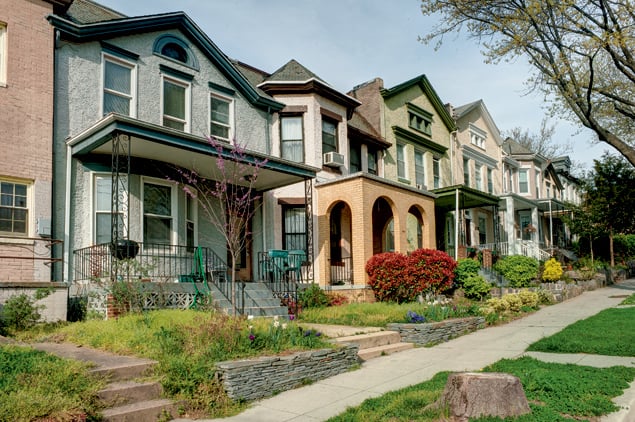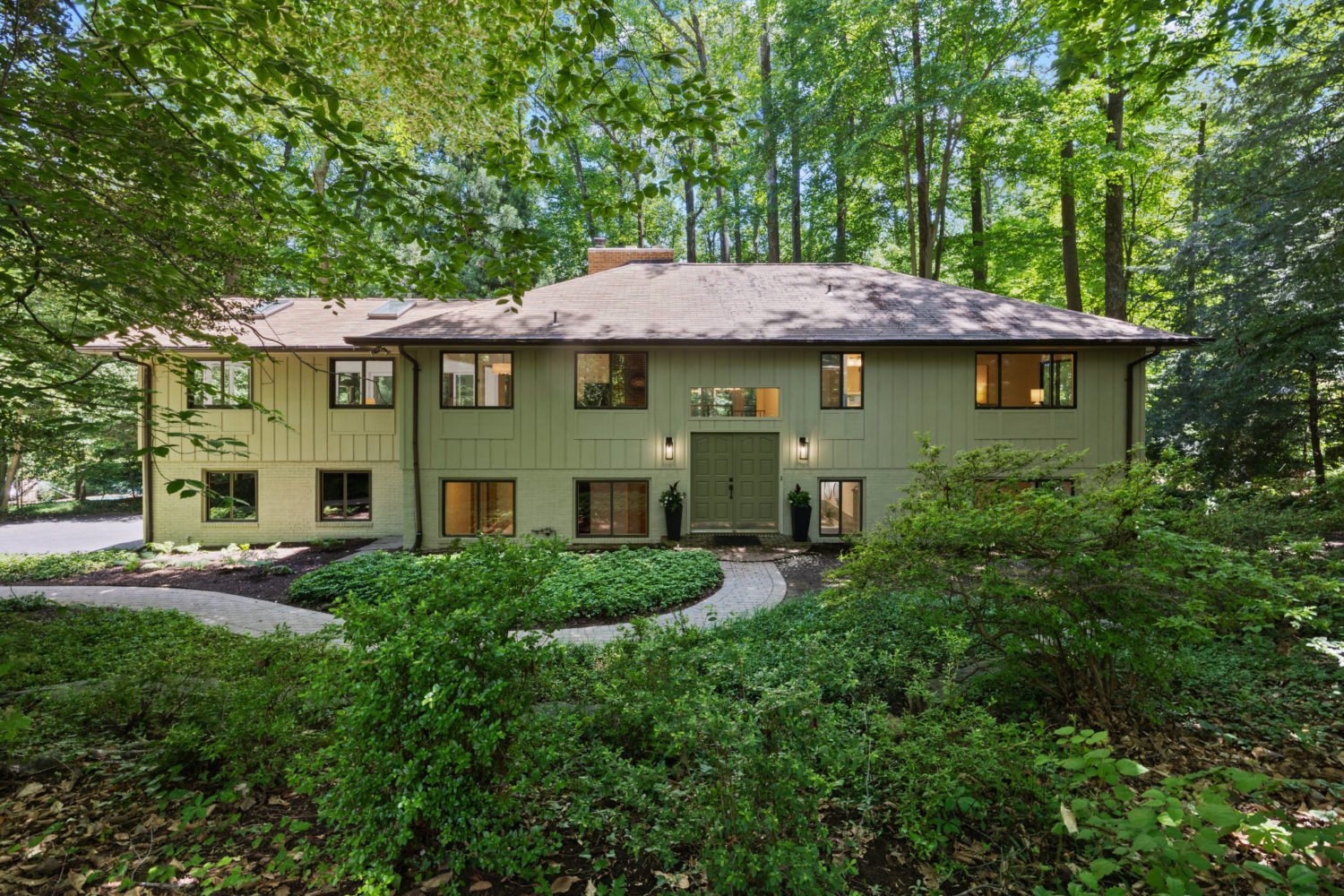Handy with Tools
Seven years ago, Anne Stom moved into a house in DC’s Petworth Built mostly in the early 1900s, Petworth was a thriving Young professionals are drawn to the affordability, close-in Despite the changes, many of the neighborhood’s longtimePetworth
that had been lived in by the same couple for 40 years. “Like many of the
homes here, it was well built and had good bones,” Stom says. After making
“600 million trips to Home Depot” while she renovated—and seeing many of
her neighbors do the same—she decided the neighborhood was ripe for a
hardware store. In February, she opened Annie’s Ace Hardware, one of many
new businesses that have set up shop in an area undergoing tremendous
change.
middle-class community for the first half of the 20th century. After the
riots of 1968, the neighborhood declined dramatically. The opening of the
Georgia Avenue-Petworth Metro station in 1999 sparked development that has
been gaining momentum ever since. And more is on the horizon, including a
Walmart and a streetcar line along Georgia Avenue.
location, and beautiful houses, including Wardman-style rowhouses and
bungalows in a rainbow of colors. Although prices have risen—the median
sale price went from $289,000 in 2010 to $320,000 in 2011—there are still
bargains.
residents have stayed. Vivian and Paul Henderson have lived in their
three-bedroom Colonial just north of Petworth for more than 50 years. “We
went through a period where there were no children in the area,” says
Vivian. “The neighborhood is coming back alive. We’re thrilled to see
services that were here when we first moved in in 1959.”
Want to be in the Center of it All
A short commute to downtown DC, thriving nightlife and City planners have long praised Arlington’s Wilson Boulevard On weekend evenings, the neighborhood is packed with From 2010 to 2011, median prices jumped by about 10 Two popular buildings for single buyers are Clarendon 1021 andClarendon
restaurants, and a wealth of condos and apartments draw many singles to
Clarendon. “If you want to be in the best neighborhood in Arlington, you
move to Clarendon,” says Jeff Grieco, who bought a two-bedroom, two-bath
condo in the neighborhood last year.
corridor, which runs through Clarendon, as one of the nation’s most
walkable and densely populated suburban communities. High-rise condos and
apartments are filled with singles and couples. “It’s sort of like a
halfway house between college and the real world,” says
Grieco.
bar-hopping young professionals—they might stop at the live-music venue
Iota Club & Café, the sports bar Spider Kelly’s, or the hipster
favorite Galaxy Hut. Seven Clarendon restaurants made The
Washingtonian’s list of 100 Very Best Restaurants this
year.
percent—from $449,000 to $495,000—and the average number of days on the
market dropped from 51 to 46. In addition to condos and rowhouses close to
the Metro, nearby neighborhoods are lined with Arts and Crafts bungalows,
Colonials, and split-levels.
the Phoenix, both of which have open kitchens with granite countertops and
rooftop pools. According to Adam Gallegos of Arbour Realty, condos in the
Phoenix sat on the market an average of only 21 days last
year.
Looking for the Next Big Thing
When real-estate broker Suzanne Des Marais first started In the easternmost part of the District’s Northwest quadrant, “Everywhere you turn, there’s renovations,” says Gary Mendel, Median prices in the 20001 Zip code have already seen aBloomingdale
selling in DC’s Bloomingdale in 2001, she described her properties as
being in LeDroit Park because few people had heard of Bloomingdale. “Now
people are calling Eckington and Truxton Circle Bloomingdale,” she
says.
Bloomingdale was long a settled, predominantly African-American community
in the shadow of Howard University. But as development pushed east in the
early 2000s—from Dupont Circle to Logan Circle to U Street and
Shaw—Bloomingdale began to attract young buyers looking for affordable
homes within walking distance of DC’s hottest neighborhoods.
who moved to the neighborhood in 2009 and spent two years renovating his
house on Rhode Island Avenue. Many of the homes are Victorians with bay
windows, built in the late 19th and early 20th centuries. Thanks to
primarily residential zoning, developers and builders have taken to fixing
them up rather than tearing them down and building anew. “It’s a very
attractive, cohesive neighborhood without a lot of infill lots,” says Des
Marais.
bump—from $410,000 in 2010 to $417,000 in 2011. Rowhouses range from about
$350,000 for one in need of a major renovation to $800,000 for a home
already redone. Condos—many of which are in converted rowhouses—start
around $200,000 for a one-bedroom and top out around $500,000 for a
three-bedroom.
Want the Walkable Lifestyle Without the Crazy Price Tag
Families have long flocked to this Maryland suburb for its “It’d be very difficult to find a one-bedroom in Logan Circle Downtown Silver Spring began its transformation in the late In the early and mid-2000s, a crop of luxury condos popped up Restaurateur Jackie Greenbaum capitalized on the influx ofSilver Spring
affordable prices, good schools, and easy commute to DC. But as downtown
Silver Spring has developed, the neighborhood has attracted single buyers
as well. “I was looking for something affordable, convenient, and close to
the Metro,” says Susan Pologruto, whose three-bedroom townhouse is on the
edge of Sligo Creek Park and within walking distance of the Silver Spring
Metro.
for what you would pay for a two-bedroom, two-bath in Silver Spring,” says
real-estate agent Melinda Estridge.
1990s when the American Film Institute committed to refurbishing the
Silver Theatre and Discovery decided to move its headquarters nearby.
Recently, the Fillmore, a concert venue that opened last fall, has brought
acts such as Mary J. Blige, Blondie, and Wale to town. Ethnic restaurants
including Mandalay and Addis Ababa have flourished along with chains such
as Lebanese Taverna and Copper Canyon Grill.
in the 20910 Zip code, where most of the area’s attractions are located.
Estridge recently sold a two-bedroom penthouse apartment in the Crescent,
a 14-story condominium that opened in 2006 near the Metro, for
$390,000.
twenty- and thirtysomethings by opening a hip lounge called Sidebar two
years ago. With vintage furniture, chandeliers, and a backlit bar, the
speakeasy-style place would fit well on DC’s H Street, Northeast. Says
Greenbaum of the bar: “It draws heavily from the younger population that’s
moved into the nearby buildings.”



















